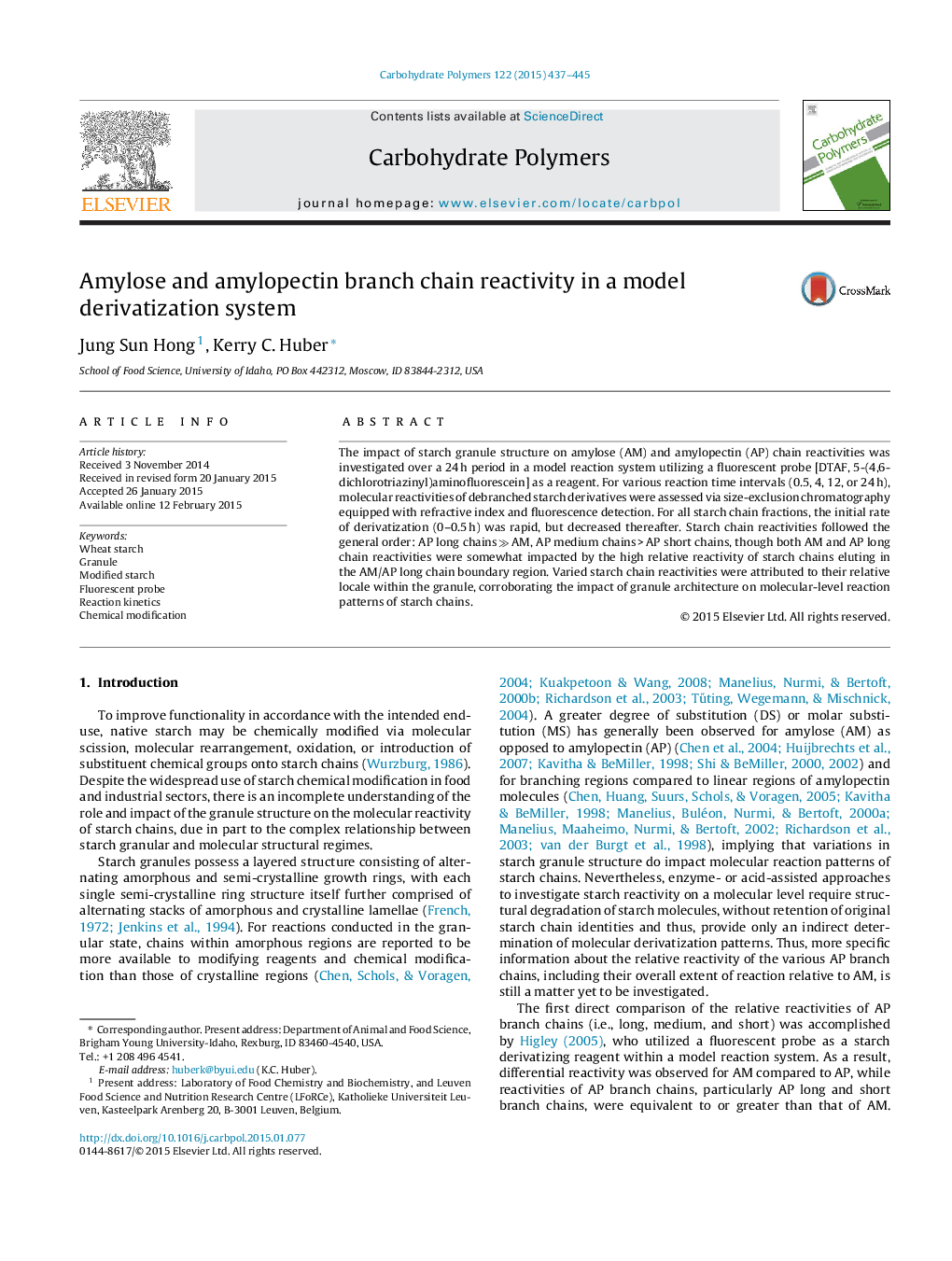| Article ID | Journal | Published Year | Pages | File Type |
|---|---|---|---|---|
| 7789384 | Carbohydrate Polymers | 2015 | 9 Pages |
Abstract
The impact of starch granule structure on amylose (AM) and amylopectin (AP) chain reactivities was investigated over a 24 h period in a model reaction system utilizing a fluorescent probe [DTAF, 5-(4,6-dichlorotriazinyl)aminofluorescein] as a reagent. For various reaction time intervals (0.5, 4, 12, or 24 h), molecular reactivities of debranched starch derivatives were assessed via size-exclusion chromatography equipped with refractive index and fluorescence detection. For all starch chain fractions, the initial rate of derivatization (0-0.5 h) was rapid, but decreased thereafter. Starch chain reactivities followed the general order: AP long chains â«Â AM, AP medium chains > AP short chains, though both AM and AP long chain reactivities were somewhat impacted by the high relative reactivity of starch chains eluting in the AM/AP long chain boundary region. Varied starch chain reactivities were attributed to their relative locale within the granule, corroborating the impact of granule architecture on molecular-level reaction patterns of starch chains.
Related Topics
Physical Sciences and Engineering
Chemistry
Organic Chemistry
Authors
Jung Sun Hong, Kerry C. Huber,
